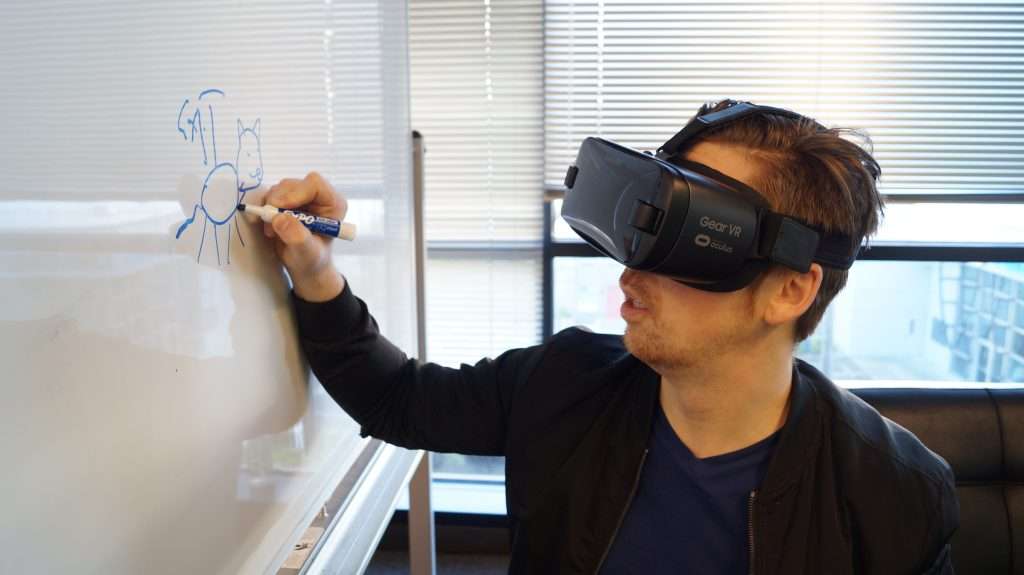A prospering society that provides people with opportunities necessarily places education as its top priority. Education liberates the intellect, fulfils the imagination, enables progress, and serves as the basis for a healthy society. The United Nations’ SDG 4 aims to ensure inclusive and equitable quality education and promote lifelong learning opportunities for all (Department of Economic and Social Affairs, 2023). Education is modernising as our technology improves. What is the role of technology in the future of education?
The Role of Technology in Achieving SDG 4
Education is one of the priority objectives set out within the 17 SDGs to be achieved by 2030. Discussion around the importance of education is not new. Indeed, the world has recognised its paramount importance for many decades now. The need for education is one of the oldest themes of our global society. Historical knowledge points to the presence of education systems in ancient civilizations in Greece, China, Rome, and Egypt (Cubberley, 1920). We can conclude that the education systems of the past are the basis for our current and future momentum. The emerging role of technology in the future of education is perhaps a turning point in this history.
The need to amend and improve our current educational system is urgent. The losses of the Covid-19 pandemic exemplify its current vulnerabilities. The Covid-19 pandemic showed us how vulnerable the world’s education system is to any severe disruption, as millions of children went without in-person classes. Although we live in the era of information, many children around the globe still require basic material infrastructures like access to water, electricity and sanitation (Department of Economic and Social Affairs, 2023). These conditions only make attending school and learning much harder.
Education has always utilised technology as an ally. The development of many technologies can be mapped parallel to the discovery of writing. Writing necessitated expansive technologies like the wax tablet, papyrus, scrolls, library, pencil, blackboard, chalk, and textbooks. Computers are just the farthest expressions of the same driving developmental impulse. Is the role of technology in modern education transforming education into something entirely new?

New Technologies in Education
What are the new technologies that are transforming education? And how exactly will our education systems look in the future? Teachers are now using new technologies at all scales, from primary, to secondary, to tertiary education. Some of these types of technologies include:
- Augmented and Virtual Reality Technologies. AR and VR are sometimes used to teach medical skills, like those needed for surgery or anatomical knowledge. AR and VR actually have a really large set of potential uses. VR in particular is quickly finding many niche uses at university campuses all over the world.
- Artificial Intelligence Technologies. Some schools and universities are using AI to help deliver personalised learning experiences. AIs can observe how an individual learns best. They can then make tailored alterations for that person. Many of these promising teaching modalities including Machine Learning.
- Learning Analytics – New technologies allow for better tracking of student progress and outcomes. Learning Analytics are vital for knowing that our methodologies are effective.

Overall, new technologies will allow for better information about what students need. They will allow for a better understanding of how students learn and retain skills. Also worth a mention are technologies such as brain imaging. Neuroscience is playing a key role in developing an advanced and practicable understanding of how the brain itself learns best.
Technologies Have Limitations
Despite the promises of technology, it is essential to remember that the technologies themselves can’t make up for a lack of pedagogical understanding and skill. Understanding how to best incorporate new technologies into the educational system is necessary. However, it is also necessary to evaluate how a given technology fits into the teaching and learning process. We must consider how a technology complements how we naturally learn (or doesn’t).
Critically, ignoring these complex factors could lead to the false conclusion that a lack of teaching professionals in classrooms could be simply resolved by implementing video lessons, to give an example. The human face to face element of effective teaching must be taken into account.
The educational process also involves different agents in addition to students and teachers. Moreover, how these agents choose to use and interact with new technologies should be analysed so that it can be made effective and purposeful.
Having a rational analysis and a realistic understanding of a technology’s limitations does not mean reducing its importance. As already mentioned, education has always involved technologies. The evolution of our society throughout history has only been possible because of this special relationship. However, new technologies we might choose to adopt will not on their own solve every pedagogical issue. We need to use these technologies in alignment with our human inclinations, interests, predispositions and skills.
Taking the most

There is no stereotypical student. More and more, educators are recognising that every person learns differently and at their own pace. Education systems must benefit every student and recognise their diverse needs. For this reason, experts must employ a set of pedagogical strategies to meet as many necessities as possible. Furthermore, modern digital technologies help address the most varied types of demands. New technologies help address students with diverse learning needs.
Simulation games, for example, allow students to develop cognitive outcomes, knowledge acquisition, content understanding, problem-based learning, motivation, engagement, satisfaction, collaboration, and social/soft skills (Vlachopoulos & Makri, 2017).
Immersive Virtual Reality (VR) as mentioned earlier is another example of technology that can offer significant advantages for learning a well as advantages for students with diverse needs. VR is usually employed in vocational education, especially in areas where an actual situation would not be possible due to lack of access or potential harm. It is a type of technology that would be very beneficial for those students with some level of disability (Freina & Ott, 2015).
A learning Information System (LMS) is a tool that has gained more and more space within the educational environment. In the information age, quantity, access and how knowledge is organized and distributed can represent the difference between success and failure. LMS offers excellent benefits to the teaching-learning process by facilitating online access to courses, materials and activities (Snoussi, 2019).
Group and Individual Learning
Even in a classroom with 30 students, the learning process can occur individually or in groups. Group learning enhances communication, exchange of experience, and mutual help. Within education, experts already recognise the importance of group study (Wilson, 2007). This explains why group learning methodology is already a huge focus. The Wiki appears as a sharing and communication tool with modern digital technologies. It facilitates sharing knowledge and working together, even over long distances (Parker & Chao, 2007). It is a tool with great potential for use in the learning environment if better explored.
Internet Age
Obviously, when discussing modern digital technologies, there is no doubt that one of the most paramount technologies that have emerged in recent years is the Internet. It emerges as a disruptive technology revolutionising communication, business, international relations, and education. It is a platform that enables the development of miscellaneous tools such as social networks (Dougiamas & Taylor, 2000). The Internet has already been used in education, but its potential can be further explored to help minimize current problems (Livingstone & Bober, 2004).
Conclusion: The Role of Technology in Supporting Progress
The role of technology in education is clearly very much related to SDG 4. Technology has a large role to play in achieving goals and targets related to providing equal and equitable access to education and the opportunities and development that it affords at all scales, individually and nationally. As a support element to actions related to SDG 4, the role of technology in the education systems of the future is promising to revolutionise learning and accessibility.
Education is a broad and complex topic. Technology is one of many answers to achieving the proposed objectives set out in the UN SDGs. Technological advances and initiatives have proven their effectiveness in regards to education, and this has been true since the dawn of civilisation. In recent years, with the advent of modern digital technologies, we can verify various tools that can be adopted or better explored in the field of education.
To learn more about how The THRIVE Project is researching, educating and advocating for a future beyond sustainability, visit our website. You can follow our informative blog and podcast series, as well as find out about our regular live webinars featuring expert guests in the field. Sign up to our newsletter for regular updates.
